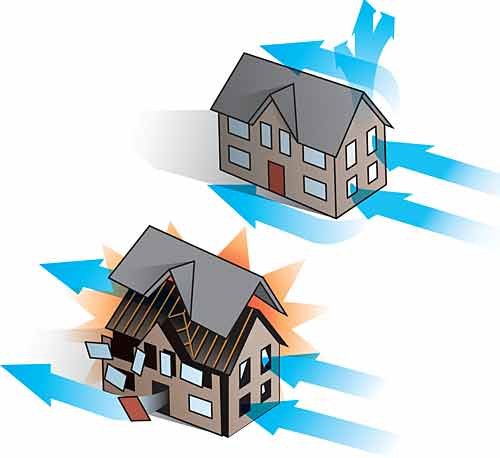New Glass Technologies Improve Performance of Architectural Glass
It should be noted that all energy performance values on the NFRC label represent the ratings of windows and doors as whole systems - that is, glass plus the framing system. The three required ratings are U-factor, solar-heat-gain coefficient and visible transmittance. Some manufacturers also measure air leakage and condensation resistance, but they are optional in the labeling. The NFRC has also developed rating and labeling procedures for window film attachments, internal or between-the-glass blinds and shading devices, as well as dynamic glass products that change tint in response to temperature, sunlight, or electric charge.
NFRC's Certified Products Directory is expanding to include these ratings as they become available. NFRC is currently considering such energy ratings as ultraviolet light/fade protection and overall comfort. The Council is also working to develop a new commercial program called "the Component Modeling Approach," measuring whole-product performance for nonresidential fenestration products assembled on-site. This new program is being developed in a way that will likely appeal to much of the design community, in addition to code officials and manufacturers, by helping architects determine how design changes can affect the overall energy performance of the building.
Energy Star Another rating program is known as Energy Star. Primarily oriented toward helping consumers reduce heating and cooling costs, Energy Star is a joint program of the U.S. Environmental Protection Agency and the U.S. Department of Energy. Energy Star-labeled windows meet a stringent energy-efficiency specification set by the Department of Energy and have been tested and administered by the NFRC, which assigns specific energy-efficiency measures such as U-factor and solar-heat-gain coefficient to the complete window system, not simply the glass. Energy Star-qualified windows may have two or more panes of glass, warm-edge spacers between the window panes, improved framing materials, and low-E coatings.
Energy Star further lists climate zones in the United States and a recommended glass type for each.
In order to gain the coveted "Energy Star qualified" rating, new home builders must install the low-E glass determined for their particular climate zone. In the North/Central region of the country, for example, Energy Star recommends "Moderate Solar Gain Low-E Windows," which screen out a selected portion of the sun's heat in the summer but allow a good amount of solar heat in winter. The inside window glass stays warmer, so occupants don't feel a draft with the thermostat set at 70 degrees Fahrenheit.
An important point to note is that while the NFRC label can be found on all Energy Star-qualified window, door, and skylight products, Energy Star bases its qualification only on U-factor and SHGC ratings. But now that more than 50 percent of new products in the residential market bear the Energy Star label, the program will develop more stringent ratings to maintain the value of the Energy Star name with a goal of having 20 percent to 25 percent of the market carrying the Energy Star label.
Impact-resistant Glass for Hurricane Prone Regions
As hurricanes and tropical storms have devastated coastal states in recent years, codes officials and insurers have required protection in those areas in the form of impact-resistant glass and frames. Following Hurricane Andrew in 1992, which killed 23 people and caused $25 billion in damage, extensive research indicated that a breech of many building envelopes led to internal pressurization of the compromised structures-a situation that magnifies forces on walls and roofs, with the potential for catastrophic failure.
Â
|
Â
Consequently, Florida and other coastal states and municipalities have implemented stringent codes requiring that the building envelope be maintained during a hurricane, and that all elements of the building shell resist the effects of windborne debris as well as sustained turbulent winds lasting several hours. For many homes and businesses, that translates to having impact-resistant window systems. In response, manufacturers have now developed a broad portfolio of products with impact-resistant laminated glass and components to withstand higher design pressures. These hardened window assemblies have been refined so that they are barely distinguishable from normal residential and commercial windows.










